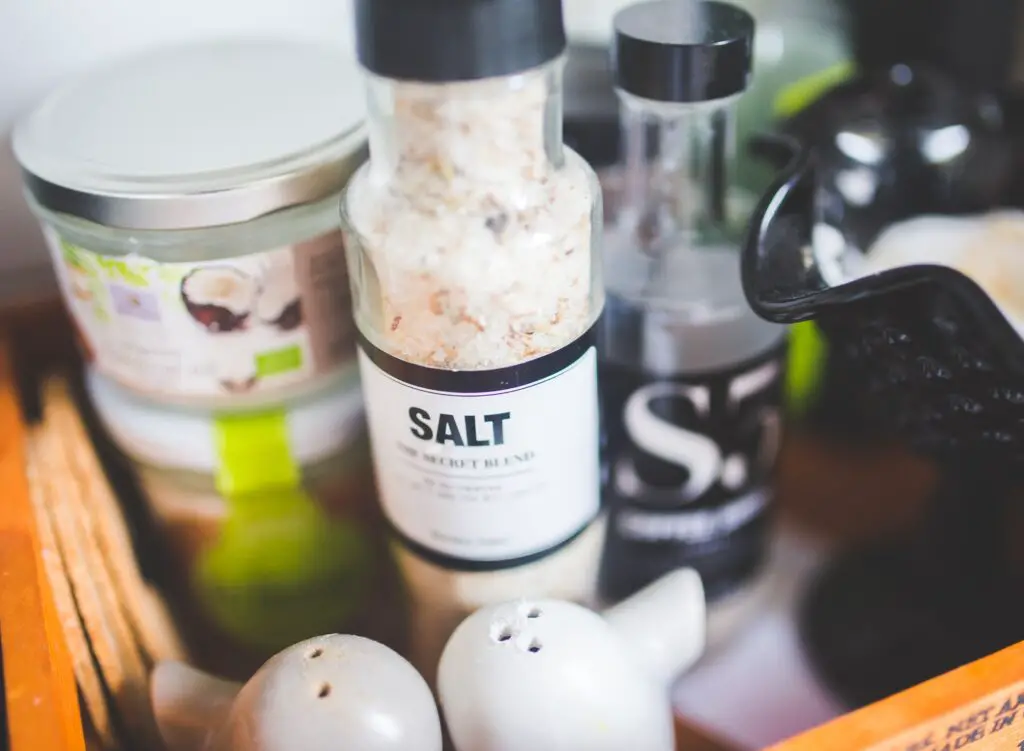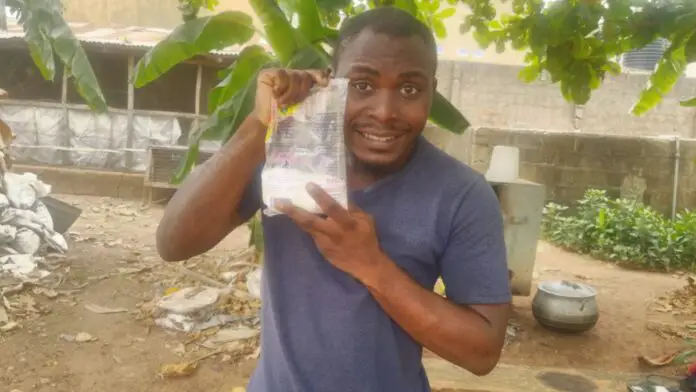Some links on this page may contain affiliate links which means that, if you choose to make a purchase using the link, Agricfy.com may earn a small commission at no extra cost to you. For more information, go to our Affiliate Disclosure Page!
Introduction
You have started your fish farm mostly without any issue, two months have gone and one day you wake up to go check up on your fish then suddenly a few of them have dropped dead.
WHAT WILL YOU DO? You are in crisis already, how do you treat your fish?
Well, I’ve been there before in my early days when I started fish farming will little knowledge about the business.
I was so confused because I could not think of anything that could have happened overnight to make my fish die. After several checks, I noticed there are could be a few reasons for this.
- An outbreak of disease
- The Pond is dirty
- Adulterated feed
- Bad fish
The above-mentioned points are just three of various reasons why your fish might die or not feed well.
When this happens, how do you save the remaining fish that are alive?
There are various ways to treat your fish when they are sick and or when they keep dying with minimum changes. Some treatments are natural while others are artificial which I am going to be mentioning in this article.
- Salt
- Bitterleaf
- Charcoal
- Tetracycline
How To Treat Your Fish
1. SALT

The first natural treatment that people use including me on the farm is to use salt to treat the fish.
Salt can save your fish while it can also be the reason why you close down your farm.
Salt is a quick natural cure for any type of disease that might be affecting your farm. It is one of the most important things that must you have on your farm because it is a go-to substance that you will be needing almost every day on the farm.
For example, if you just finish sorting your fish and you notice that your fish seem weak, just pour salt into a bowl of water and sprinkle on them right inside the pond, and within a few minutes, they will feel ok.
Like I said earlier, excessive application of salt on the fish can lead to their death if not careful.
At intervals, when you change the water in the pond, sort the fish or when you decide to sell your fish and you have some left, sprinkle salt on the fish and they will just be fine.
I know you may be mumbling WHAT IF IT DOES NOT WORK?
Salt is more like a first aid treatment and an anti-stress substance that can be easily reached when there is a crisis and has not gone beyond control.
Except for rare situations where the infection has gone beyond what salt can take care of, then you might not see the effectiveness of this piece.
How do you measure the quantity of salt to apply?
I often get this question about the right measurement for applying salt for your fish treatment. I will say there is no right or wrong measurement for salt, it all depends on the number of fish in the pond.
As I mentioned too much in the pond can kill your fish, so when trying to apply fish, use your discretion in measuring the amount of salt.
2. BITTERLEAF

Next on the list of natural treatments for your fish is a bitter leaf.
Just as human being, animal gets cold, sick, one thing you can use to treat them when this happens is a bitter leaf (either dry or blended).
Most times when I recommend bitter leaf as a first-aid treatment for catfish, they go like “HUH” it’s not possible, but yes it was, and IT IS possible to treat your catfish with bitter leaf.
How do you apply the bitter leaf to your pond?
Applying bitter leaf on your fish helps to cut down stress at any point in time when you notice something strange in your pond or you could feel some kind of disease outbreak among the fish.
When you want to apply bitter leaf, cut some sticks of bitter leaf, blend or grind very well, squeeze the water, and either pour into a plastic bottle (for future use) or in a bowl (for immediate use).
Pouring bitter leaves in your pond doesn’t affect the fish at all, the only thing that will happen will be the color of the water in the pond will change to green.
Don’t panic at all, it’s more like a detox for the fish.
Another thing you can do with a bitter leaf is after blending/grounding the leaf, mix the blended leaf with the feed for the fish and sun-dry it for some time, and give your fish.
Treating your fish and pond once in a while is a good way to protect your investments.
3. CHARCOAL

I guess a lot of people just like the previous point will be surprised about using charcoal for fish treatment.
“Laughing in Swahili” Charcoal is multi-purpose when it comes to fish farming. Majorly, charcoal is used to clean out dirty ponds (as in ponds with infection).
Charcoal can also be used to control water pH. If you read the article where I talked about hatching catfish in another country, you will know that I used charcoal to control the water pH that went down and it was successful.
So, when you have an issue on your farm either with water pH or you just want to treat your pond, just apply charcoal, straight up, you will be fine.
To apply charcoal on the pond is very easy, just get some charcoal (big and solid ones, not pieces) and put them in the water that’s all. Leave the charcoals for maybe 2 days and remove them.
4. TETRACYCLINE
Another type of drug you can use to treat your fish is tetracycline (popularly known as Red and Yellow). This drug is an anti-stress tablet. You can use it either when you just finish sorting and counting your fish or use it when you just transferred them from one particular farm to another. Get a few sachets of the drug, ground them or pour out the blended particles into a bowl, pour some water into it, stir and sprinkle it into the pond. That’s it, straight to the point, no time-wasting.
If you are someone that isn’t sure about the right measurement for applying salt, then using the red and yellow tablet for your fish to relieve them of stress is a good way to go.
A bonus tip on treating a catfish or what you can apply to your fish when transporting them from one farm to another is PALM OIL.
Palm oil prevents the water in the keg your fish are in from bubbling thereby suffocating to death.
Palm oil neutralizes the water and keeps the fish afloat for the duration you use to get to your destination.
Conclusion
The treatments mentioned above are more like a first aid treatment for your fish when you notice some infection in them, and might not be enough to save them when there is an outbreak.
There are other methods and drugs you can use to treat your fish when something happens on the farm but I always advise be on the watch for your fish at every point in time to see that they are doing well.
If you notice that one fish is feeling somehow, separate the said fish and treat. Don’t wait until the infection has spread across other ponds before you do the needful.
NOTE: Because some of this first aid treatment has worked for some farmers doesn’t mean it will work on your farm. The type of infection that hit your farm might be something you can’t control easily until you consult a professional.
Also, the type of fish that was supplied to you can also be a cause for an outbreak on the farm.
That’s why I always say try to get your catfish seedlings from a reliable source.
If you want to buy catfish fingerlings or juveniles, send an email to daniel@agricfy.com

My fish of 16 days of hatch start dropping what will I do?
Fries start getting sick at exactly 14 days and if you don’t know how to manage and treat them, they will all die
Is it OK to put bitterleaf in a month for preventative sake, also if u notice something odd with ur fish, do we use bitterleaf anytime we change water?
Pls..
It’s okay to put bitterleaf in your pond. You need to know what’s wrong with your fish before you know what treatment you will give your fish
[…] is often far more difficult to treat catfish diseases as they might have gotten worse when appropriate care can even be arranged. However, in this blog post, […]
How long can bitter leaf stay in the pond before we change the water in the pond? Thanks
It could stay for as long as you want. It doesn’t really have a side effect on the fish when you apply it right
Ok thanks.
Good morning sir, if you have WhatsApp group chat, please add me, 08108670600
Mr Daniel…my fish Is now three months and I noticed that there body used to pill and died in a few day…pls can bitterleaf control there disease
yes
Pls sir can you give me your WhatsApp number?
Good evening sir
What can I do to my fish having tail rot
My junior brother mistakenly applied overdose antibiotics to my fingerlings. Three days later, they were left outdoors, exposed to the sun for hours. Usually we keep them indoors, so when I came to check them late in the evening, over a hundred had already died. I started suspecting that it was the exposure they were subjected to or the continuous effect of the antibiotics. Because of all this, none of them ever died, even 3 days after the antibiotic incident
Thank you Daniel. Concerning the first aid. Can I apply first aid anytime I changed my water.
No need, except there is an emergency
Why do catfish fry die at 14 to 16 days?
It’s normal and fries management is important and a tactics that must be known
Pls sir, can exposure to sunlight kill it affect the fish